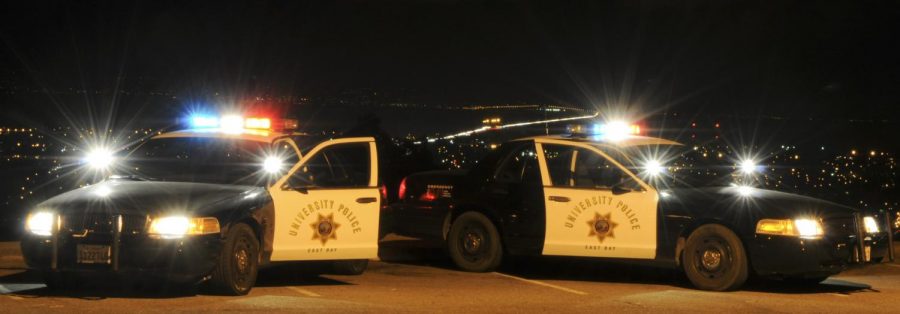Campus Safety 101: Walking around CSUEB at night
January 24, 2018
Winter time on Cal State East Bay’s campus can get cold and especially dark since daylight savings time ends in November. The dark evenings will continue until daylight savings returns in early March. For anyone on campus studying or taking night classes, this means having to cross parts of campus that are practically pitch black just to get to their cars. Often, students and faculty walk alone.
For students coming or going towards Meiklejohn Hall, there are five or six fixtures that provide a limited amount of light to the walkway in front of the New and Old University Union buildings and the library. It can become so dark that the campus will occasionally provide gas-powered spotlights. Areas near the Art and Education, Music and Theatre buildings are also fairly lit. The parking lots and streets become dark once the sun sets.
In surveys gathered from the Self-care and Wellness Fair and Safety@Your_Service in 2011 and 2012, students raised concerns such as: “Not enough light at night on campus,” “I’m concerned about adequate lighting on walkways and parking lots” and “More lighting by the PE building please.” Although there haven’t been any recent complaints, lack of lighting is still a concern.
The areas around the Valley Business and Technology Center, Student Services and Administration buildings are not dark. On the contrary, the lights located there have new LED bulbs illuminating the walk ways compared to other parts of campus. Facilities Operations director, Robert Andrews, told The Pioneer that there were upgrades to internal and parking lot lighting towards the end of 2017 and that they were part of a three-year and ongoing process of upgrades on East Bay’s campus.
For the dark nights, some college campuses offer students and staff escorts to their cars, but for this to happen at a campus as big as CSU East Bay that holds night classes, the University Police Department would have to staff 20 officers. Instead, East Bay has its own safety procedure that University Police Department chief of police, Sheryl Boykins, considers just as efficient.
Yellow emergency call boxes are located around campus that can be seen with a blinking blue light. Boykins advises students wear reflective clothing, to walk in groups and have some sort of a sound device such as a whistle.
“I feel that if students and faculty were to talk about in class and become more communal and walk in groups or together to their vehicles, then the saying that there is strength in numbers would be realized,” Boykins said.
The University Police Department offers an escort service to students and staff who may feel uncomfortable walking alone. All it takes is a call to UPD dispatch and an escort will be sent to either accompany them to their cars or any location on campus. Although many aren’t aware that the service exists, it’s important that everyone on campus know that their safety is a top priority.
To utilize the campus escort service, students and staff may contact the University Police Department dispatch at 510-885-3791.



















